What the Different Parts of Chicken Are
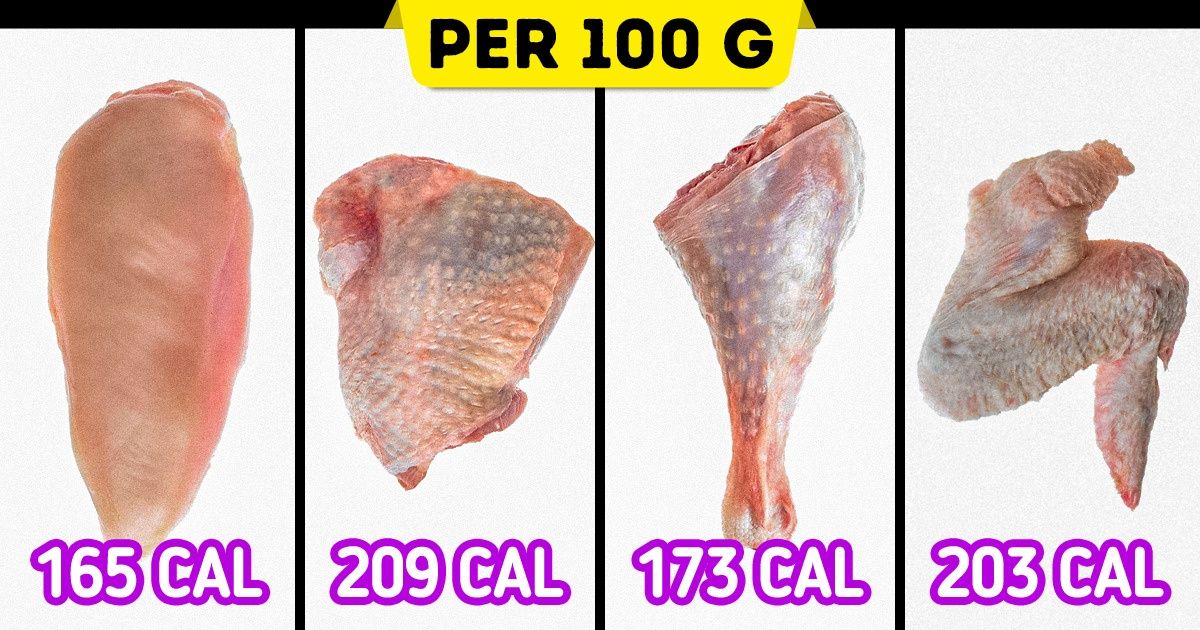
Chicken is possibly the most common domesticated fowl in the world. Its versatility has made it common all over the world. It can be roasted, baked, grilled, fried, and sautéed. Not only that, but it also has a low fat to high protein ratio, making a great option in terms of nutrition. That’s why 5-Minute Crafts wants to show you the 6 cuts of chicken to better understand how to use it in the kitchen.
1. The whole chicken
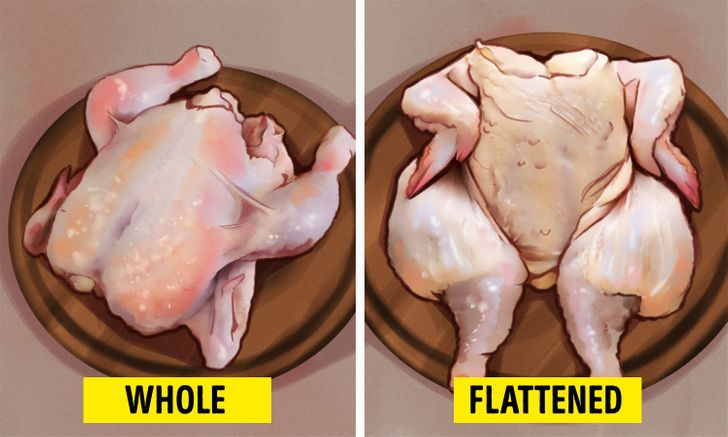
As the name suggests, this is pretty much an entire chicken without being cut. It can be used to make roasted chicken. It’s as simple as brushing it with clarified butter and seasoning all of its sides with salt. Then roast it in a 475°F oven for about 20–25 minutes, after which you should reduce heat to 400°F. Roast for another 30-45 minutes until the thighs and center of the breasts register 160°F and the juices run clear. Let the chicken sit for 20 minutes more and then it’s ready.
Another good option is to make stock with it or even flatten it if you wanted to barbecue it. Just don’t forget to finish it off in a closed barbecue to cook through.
Typically, an entire rotisserie chicken contains:
- 1,037 calories
- 166 grams protein
- 0 grams carbohydrate
- 34 grams fat
2. Breasts
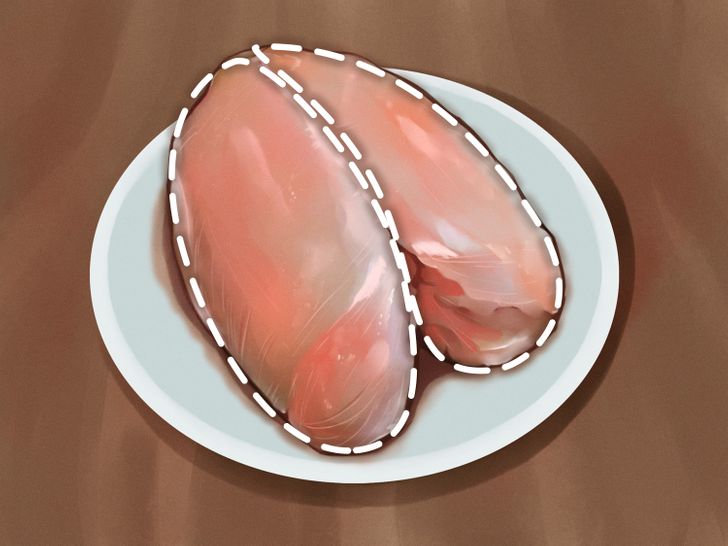
Breasts are a lean cut taken from the pectoral muscle (the largest single piece of meat attached to the ribs). A whole chicken contains one chicken breast that’s typically divided into 2 halves during the butchering process. They’re often sold as separate pieces. It’s also known as white meat and it’s popular because of its health benefits. It’s boneless and skinless, making it fairly practical as well as the most expensive cut of chicken available. It can be grilled, baked, roasted, fried, barbecued, and boiled.
One skinless, boneless, cooked chicken breast (172 grams) has the following nutrition breakdown:
- 284 calories
- 53.4 grams protein
- 0 grams carbohydrate
- 6.2 grams fat
3. Leg quarters
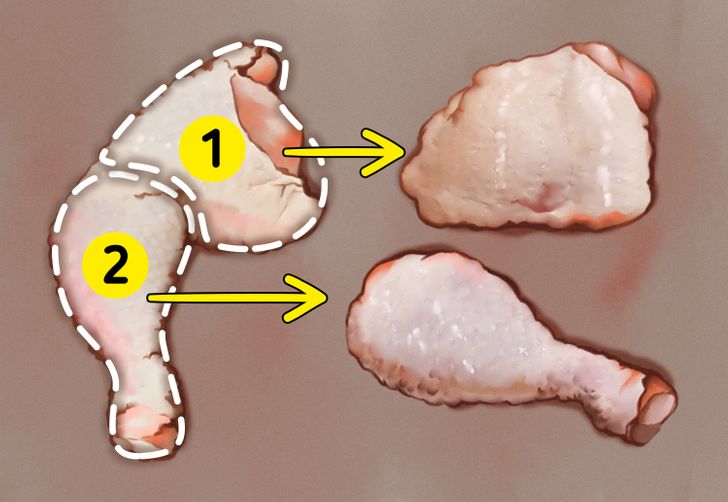
This cut’s taken from the top portion of the leg, located above the knee joint. This is known as dark-meat and unlike chicken breasts, it’s one of the most affordable cuts. It may or may not include the drumsticks. Cooking times and results will differ depending on whether a chicken thigh still has its skin on and its bones.
Chicken Maryland is the thigh with the drumstick attached. It’s a great cut for roasting and baking. It can also be used on the barbeque or char-grill. These can be divided into 2 separate parts:
1. Thighs are the upper portion of the whole leg, toward the body of the chicken. Bone-in thighs retain moisture and flavor better. It’s a good choice if you’re looking for a more flavorful and succulent dish. However, they also require more cooking time. They’re great for casseroles or bakes. Boneless thighs require less cooking time, so they’re a good option for weeknight dinner recipes. Thigh fillets are great sliced or chopped in stir-fries, or in casseroles.
One skinless, boneless, cooked chicken thigh (52 grams) contains:
- 109 calories
- 13.5 grams protein
- 0 grams carbohydrates
- 5.7 grams fat
2. Drumsticks are the calf, or lower leg, section of the whole leg that attaches to the chicken’s foot.
One skinless, boneless chicken drumstick (44 grams) contains:
- 76 calories
- 12.4 grams protein
- 0 grams carbohydrates
- 2.5 grams fat
4. Wings
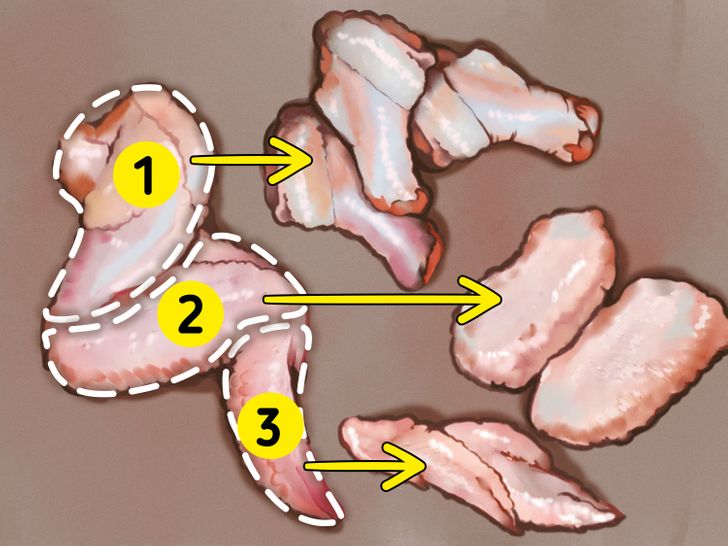
Commonly known as bar food, chicken wings are often coated with a mixture of jam, balsamic vinegar, ground ginger, and ground garlic and then baked at 385°F until the skin is crisp and caramelized. Chicken wings have 2 edible parts:
- Drumette: similar to a small drumstick made of white meat.
- Flat: part that contains tender white meat between 2 bones.
Then there’s the tips (3). They’re almost completely skin, bone, and cartilage, with pretty much no meat, so they’re often not eaten.
One skinless, boneless chicken wing (21 grams) contains:
- 42.6 calories
- 6.4 grams protein
- 0 grams carbohydrates
- 1.7 grams fat
5. Bones
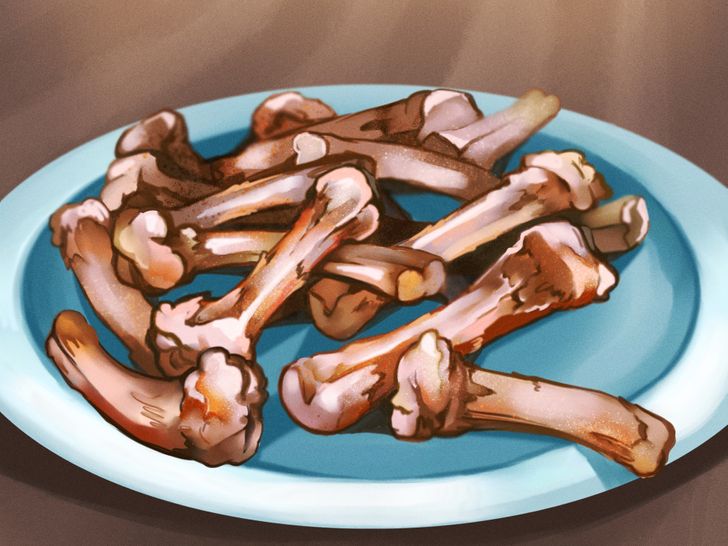
Leftover bones are ideal to use to make stock or broth. The cleaner your bones are the brighter the flavors of the resulting stock or broth will be. Light versions of these (meaning they cook for a relatively short time, around 45 minutes at a simmer) can be used to cook pasta or as a building block for sauces. Reduced and fortified, they can be turned into a delicious soup.
A portion of 237 g of chicken bones contains:
- 59 calories
- 13 grams protein
- 1 gram carbohydrate
- 0.5 gram fat
6. Fat
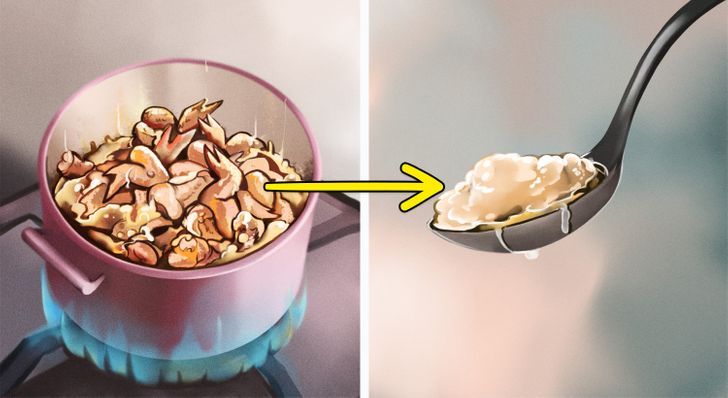
Chicken fat that accumulates on top of the stock can have a variety of uses. After heating it over low heat to evaporate off all the water and straining it to remove impurities, this fat is known as schmaltz (clarified or rendered chicken fat). It’s mostly used as a flavor enhancer to roast potatoes or vegetables.
Nutrition values for 100 g of homemade schmaltz are:
- 900 calories
- 0 grams protein
- 0 grams carbohydrates
- 99 grams fat
Bonus: Other chicken parts commonly used across the world
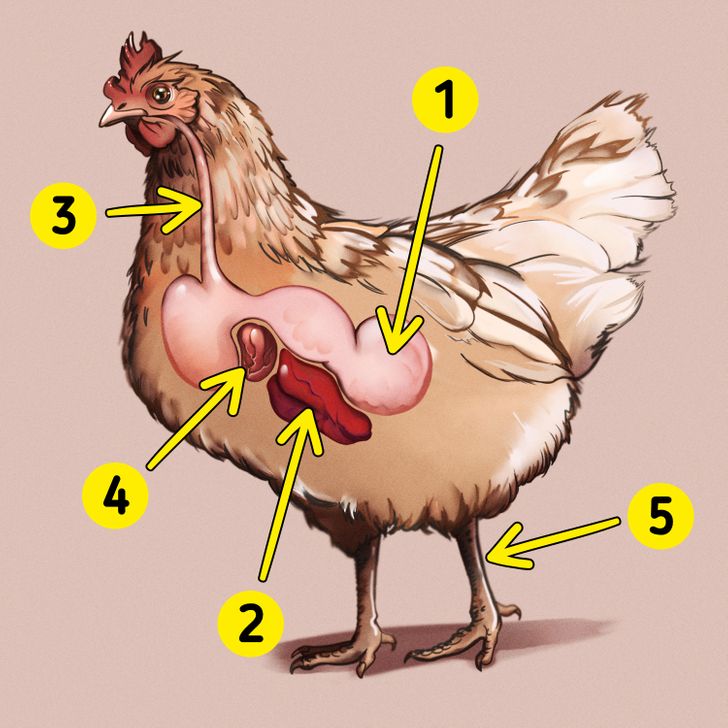
If you buy your chicken from an industrial producer chances are it won’t come with what’s known as giblets. These often come in a bundle that contains:
- Gizzard: A muscle that grinds up food before it enters the digestive system. Poultry gizzards are a popular food throughout the world. They’re often grilled in Haiti, Southeast Asia, Mexico, and parts of Africa. In Europe they’re used to make stews and salads.
- Liver: Best pan-fried with garlic and spread on toast. Avoid using it to make stock because it can give it a bitter flavor. A popular version of traditional liver and onions is made with chicken livers in Spain and other countries.
- Neck: Best used to make stock and give it a deep flavor if you’re only using the carcass. Same goes for kidneys. Both are also a great base for gravy.
- Heart: They can be used to make stock, however, in Brazil they’re often seen as a delicacy to grill.
Finally, chicken feet (5), which are not part of giblets, contain little meat and they’re considered exotic in Western cuisine. However, they’re common in other cuisines, especially in the Caribbean, China, and Vietnam. They’re mainly eaten for the skin and cartilage.